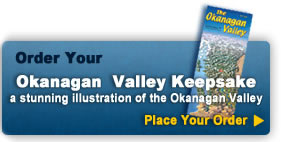VERNON History
For many thousands of years, the Okanagan Valley was the undisputed home of the Interior Salish. Early in the 19th century, fur traders used native trails along Okanagan Lake to export furs from the area to the outside world. By the 1860’s, gold discoveries had brought miners and missionaries to the valley. Settlers soon followed and land was pre-empted for ranches in Coldstream, Vernon, and Okanagan Landing. Wagon roads replaced the old pack trails, and with the arrival of a branch line of the CPR in 1892, settlers were able to reach the larger markets outside the Okanagan Valley. Improved transportation led to increased immigration and soon the large ranches were being sub-divided into smaller holdings. Major irrigation schemes allowed for the intensive planting of orchards and field crops. Incorporated in 1892, Vernon is the oldest community in the Okanagan. After a major population boom between 1907 and 1912, rumours of war curbed the influx of European capital into the Okanagan and the major land companies experienced financial collapse.
Vernon had been a centre for military training exercises since 1908, and as WWI progressed, soldiers came from all parts of Canada to train at Camp Vernon. Vernon’s first airport opened on Mission Hill, and private schools welcomed students with the promise of a British education. The confidence of the 1920’s was followed by the depression of the 1930’s as the supply of orchard fruit vastly exceeded the demand. Road and rail transportation improved enough that the CPR discontinued sternwheeler passenger service on Okanagan Lake.
Another war brought more troops for training at Camp Vernon, while the end of the war saw a new tide of immigration to the valley. Postwar optimism produced improvements in communication, education, transportation, and entertainment. Orchards began to disappear as orchardists sold out to eager developers. The army camp came alive once more in 1949, this time with the arrival of cadets from across Canada. The completion of new highways to the coast and Alberta added tourism to the economic mix. New construction from the 1960’s to present day has included a civic centre, a recreation complex, several shopping malls, library, multiplex, and a performing arts centre. The city continues to thrive - a unique history, a diversified economy, a beautiful natural setting, and a balance between sports and cultural activities have all contributed to making Vernon the "Top of the Okanagan".



